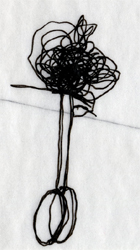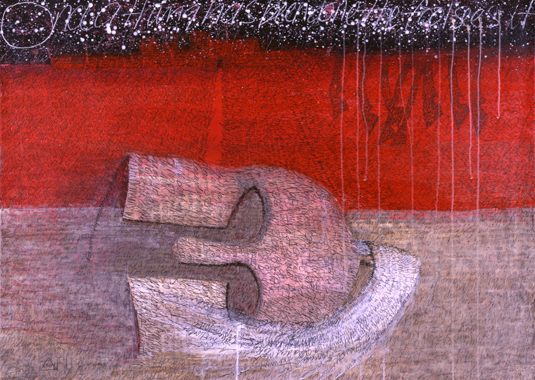| |
|
|
Artist
Statement
“Ilium is a state of mind…”(1)
The Iliad – A New Translation
All
15,693 lines of Homer's Iliad are hand-scribed in this series of works
on paper. Each painting contains an entire book or chapter based on Richmond
Lattimore's translation.
These are not illustrations, nor are they manuscripts, but through acute
attention to the narrative, the handwriting process becomes an integral
part of each piece, echoing the essence of the action.
Interestingly, the word "epic" is from "epos", the
spoken word, the "winged word" of the poems.
It is not tied down by anything or anyone. Think of an epic not as a noun
but rather as a verb or adjective describing action, a slice of unfolding
motion between two arbitrary points, which is exactly what these paintings
are about, the PROCESS. In this "process" the words actively
change into simple markings that build up into imagery using layers (and
forms) as authorized by the words themselves.
Homer, living perhaps sometime in the 8th century B.C., was a poet at
the end of a centuries-old tradition of orally-composed epic poetry. Originally the Iliad was sung to the accompaniment of the lyre, and only
written down in the 6th century. Nearly three millennia later, this work has been translated into a multitude of languages, changing ever slightlyeach time.
This body of work is a new translation - a literal, visual one.
The Iliad series began in July 2001 and was completed in November 2003.
During its creation, many significant world events unfolded before us
often mirroring the Greek epic, and validating the notion that (our unfolding)
history is in fact cyclical and that the Iliad is still a contemporary
piece of work.
"The gods in the Iliad represent projections of feelings or activities
of the observed world." (2)
The characters often speak to their inner selves as I have done, making
split decisions during each movement. Power, Fear, Hatred, Envy, Compassion,
Honor, Humility, Sleep, and Death are all personified.
While working on this series - constant questions arose:
Has mankind changed since this work was created? What have we learned
from our past? Why war?
Is it really over a woman, gold, land, power, oil? or does humankind simply need a reason to battle?
Is this really about a Greek or Trojan conflict or is it about a deeply ingrained human condition?
(1-2) Lattimore
Iliad Series Recent Review- Click here to read the Spotlight Review in Art New England June/July 2006 issue
Other Reviews for The Iliad Series - Boston Globe, Dec. 12th, 2003 |
|

